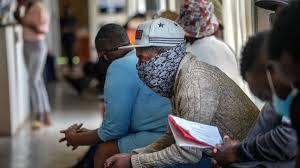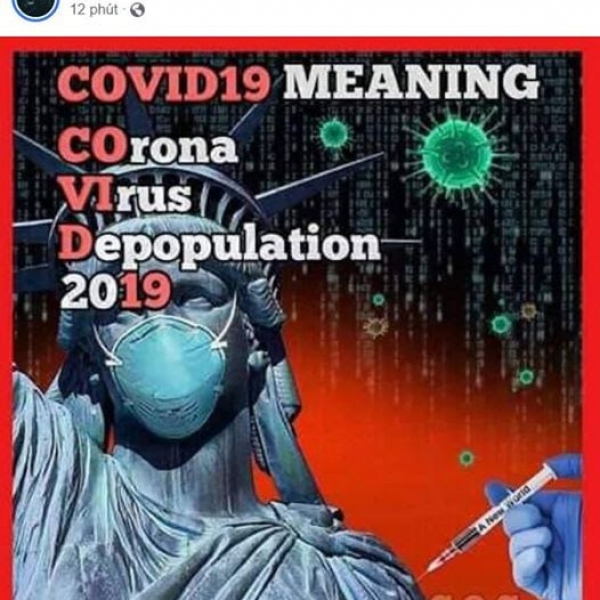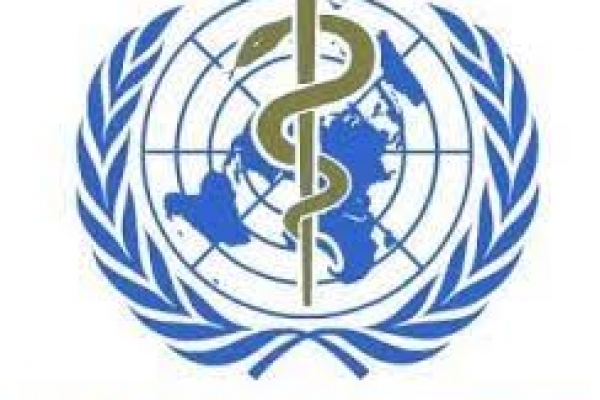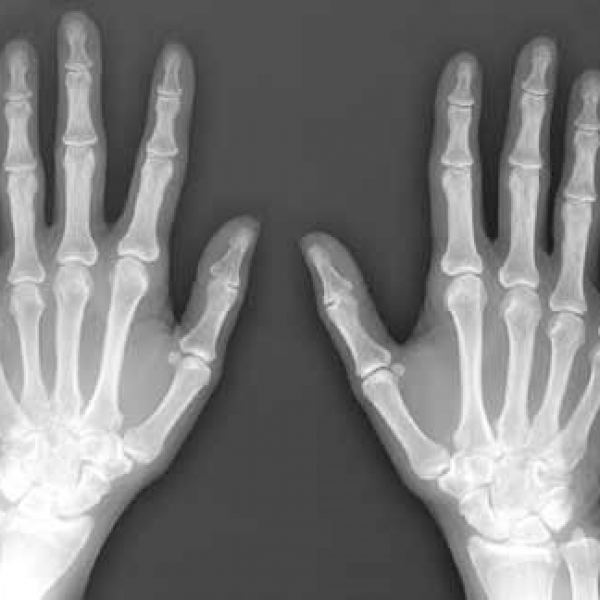Contact Admission
International Collaboration
How Many People Need Vaccines to Reach Herd Immunity?
How Many People Need Vaccines to Reach Herd Immunity?
Cần bao nhiêu người dùng vắc xin để đạt được miễn dịch bầy đàn.

Volunteers wait to be checked at a vaccine trial facility set at Soweto's Chris Sani Baragwanath Hospital outside Johannesburg, South Africa, Nov. 30, 2020.
Các tình nguyện viên chờ đợi để được kiểm tra tại cơ sở thử nghiệm vắc-xin đặt tại Bệnh viện Chris Sani Baragwanath của Soweto ngoài Johannesburg, Nam Phi, ngày 30 tháng 11 năm 2020.
Governments and officials around the world are hoping COVID-19 vaccines can create “herd immunity” to protect large populations.
Chính phủ và quan chức trên khắp thế giới đang hy vọng vắc xin COVID-19 có thể tạo ra “khả năng miễn dịch bầy đàn” để bảo vệ dân số rộng khắp.
Some experts predict that giving a vaccine to just two-thirds of a population could protect whole communities or nations. But the effectiveness of such efforts is highly dependent on what the vaccines will be able to prevent.
Một số chuyên gia dự đoán rằng việc tiêm vắc-xin chỉ 2/3 dân số đã có thể bảo vệ toàn bộ cộng đồng hay quốc gia. Nhưng hiệu quả của những nỗ lực đó phụ thuộc nhiều vào những gì vắc xin có thể ngăn ngừa.
What is herd immunity?
Miễn dịch bầy đàn là gì?
Herd immunity happens when a large percentage “of a community (the herd) becomes immune to a disease, making the spread of disease from person to person unlikely. As a result, the whole community becomes protected — not just those who are immune,” the Mayo Clinic notes on its website.
Khả năng miễn dịch bầy đàn xảy ra khi một tỷ lệ lớn “của một cộng đồng (bầy đàn) trở nên miễn dịch với bệnh tật, làm cho việc lây lan bệnh tật từ người này sang người khác khó xảy ra. Kết quả là, cả cộng đồng trở nên được bảo vệ - không chỉ những người được miễn dịch,”Mayo Clinic lưu ý trên trang web.
But there are still many open questions about herd immunity and COVID-19 vaccines.
Nhưng vẫn còn nhiều câu hỏi bỏ ngỏ về miễn dịch bầy đàn và vắc xin COVID-19.
For example, will the first vaccines be able to stop the spread of the virus, or just stop people from getting sick? How many people in a population will accept a vaccine? Will vaccines offer the same protection to everyone?
Ví dụ, liệu những loại vắc xin đầu tiên có thể ngăn chặn sự lây lan của vi rút, hay chỉ ngăn mọi người khỏi bệnh? Có bao nhiêu người trong dân số chấp nhận loại vắc xin? Liệu vắc xin có mang lại sự bảo vệ như nhau cho mọi người không?
Josep Jansa is an expert at the Stockholm-based European Centre for Disease Prevention and Control (ECDC).
Josep Jansa là một chuyên gia tại Trung tâm Phòng ngừa và Kiểm soát Dịch bệnh Châu Âu (ECDC) có trụ sở tại Stockholm.
“Herd immunity is sometimes wrongly understood as individual protection,” Jansa told the Reuters news agency. He added, “Herd immunity refers to community protection, not to how an individual is protected.”
Jansa nói với hãng tin Reuters: “Quyền miễn trừ của bầy đàn đôi khi bị hiểu sai là bảo vệ cá nhân. Ông nói thêm, "Miễn dịch bầy đàn đề cập đến việc bảo vệ cộng đồng, không phải cách một cá nhân được bảo vệ."
R Value and disease spread
Giá trị R và dịch bệnh lây lan
One of the central questions about herd immunity and COVID-19 is the reproduction rate, or R value, of the virus that causes it. R value is a measure of how many people get the virus from an average infected individual in environments where no restrictions are in place. For example, an R value of 2 means an infected person would be expected to pass the virus on to 2 other people.
Một trong những câu hỏi chính về khả năng miễn dịch bầy đàn và COVID-19 là tốc độ ( lây nhiễm ) hay giá trị R, của vi rút gây ra nó. Giá trị R là thước đo số người nhiễm vi-rút từ một cá nhân bị nhiễm trung bình trong môi trường không có giới hạn. Ví dụ, giá trị R bằng 2 có nghĩa là một người bị nhiễm sẽ được dự kiến nhiễmvi rút cho 2 người khác.
Winfried Pickl is a professor at the Medical University of Vienna.
Winfried Pickl là giáo sư tại Đại học Y khoa Vienna.
“The problem is that for now we don’t know exactly how fast the virus spreads without any precautions and with the normal travel and social activities we had a year ago,” Pickl told Reuters.
Pickl nói với Reuters: “Vấn đề là hiện tại chúng tôi không biết chính xác tốc độ lây lan của vi-rút mà không có biện pháp phòng ngừa nào và với các hoạt động xã hội và du lịch bình thường mà chúng tôi đã có một năm trước”.
Health experts have noted that anything less than 100 percent vaccine efficacy would require an increase in vaccinations to reach herd immunity. Early data on the leading COVID-19 vaccines – from Pfizer-BioNTech and Moderna - suggests only about 90 percent efficacy.
Các chuyên gia y tế đã lưu ý rằng bất kỳ thứ gì có hiệu lực vắc-xin thấp hơn 100% sẽ cần phải tăng cường tiêm chủng để đạt được khả năng miễn dịch của đàn. Dữ liệu ban đầu về các vắc xin COVID-19 hàng đầu - từ Pfizer-BioNTech và Moderna - chỉ cho thấy hiệu quả khoảng 90%.
Amesh Adalja is with the Johns Hopkins Center for Health Security. He said a good target for immunity in the United States would be to have more than 70 percent of the population vaccinated. But the number could go up if vaccines are less effective, he added.
Amesh Adalja làm việc cho Trung tâm An ninh Y tế Johns Hopkins. Ông cho biết mục tiêu tốt cho khả năng miễn dịch ở Hoa Kỳ là hơn 70% dân số được tiêm chủng. Nhưng con số có thể tăng lên nếu vắc xin kém hiệu quả hơn, ông nói thêm.
The ECDC uses an estimated herd immunity level of 67 percent for its models. In Germany, Chancellor Angela Merkel said this month that COVID-19 restrictions there could be lifted once 60 to 70 percent of the population reached immunity.
ECDC sử dụng mức miễn nhiễm đàn ước tính là 67% cho các mô hình của mình. Tại Đức, trong tháng này, Thủ tướng Angela Merkel cho biết các hạn chế COVID-19 có thể được dỡ bỏ khi 60-70% dân số đạt được quyền miễn trừ.
World Health Organization experts have also suggested a 65 to 70 percent vaccine coverage rate as a way to reach population immunity through vaccination.
Các chuyên gia của Tổ chức Y tế Thế giới cũng đã đề xuất tỷ lệ bao phủ vắc xin từ 65 đến 70 phần trăm như một cách để đạt được miễn dịch dân số thông qua tiêm chủng.
Vaccines and virus transmission
Vắc xin và sự lây truyền siêu vi
Experts say another important question is whether vaccines can stop the spread of the coronavirus, which causes the disease COVID-19.
Các chuyên gia cho biết một câu hỏi quan trọng khác là liệu vắc xin có thể ngăn chặn sự lây lan của coronavirus, nguyên nhân gây bệnh COVID-19 hay không.
Evidence so far suggests the first COVID-19 vaccines will at least stop people from developing the disease. But it cannot be ruled out that people will still catch the virus and pass it on to others.
Các bằng chứng cho đến nay cho thấy vắc-xin COVID-19 đầu tiên ít nhất sẽ ngăn mọi người khỏi sự phát triển bệnh. Nhưng không thể loại trừ mọi người vẫn sẽ bị nhiễm virus và truyền nó cho người khác.
Bodo Plachter is a professor and deputy director of the Institute of Virology at Germany’s Mainz University teaching hospital. Plachter said that respiratory infections can be hard to block completely with vaccines - although the shots are expected to reduce the amount of virus that is moving around.
Bodo Plachter là giáo sư và phó giám đốc của Viện Vi-rút học tại bệnh viện giảng dạy Đại học Mainz của Đức. Plachter nói rằng bệnh nhiễm trùng đường hô hấp có thể khó ngăn chặn hoàn toàn bằng vắc-xin - mặc dù các mũi tiêm được kỳ vọng sẽ làm giảm lượng vi rút di chuyển xung quanh.
“It may well be that vaccinated people will shed fewer viruses,” he said. “But it would be a mistake,” he added, to think that “vaccination alone can suppress a pandemic.”
Ông nói: “Có thể tốt cho những người đã được tiêm chủng, họ sẽ loại bỏ ít vi rút. “Nhưng thật là một sai lầm”, khi nghĩ rằng chỉ có” vaccine thôi có thể ngăn chận được đại dịch”
I’m John Russell.
Nguồn: https://www.google.com/url?sa=i&url=https%3A%2F%2Flearningenglish.voanews.com%2Fa%2Fhow-many-people-need-vaccines-to-reach-herd-immunity-
Other news
- Home AEDs: High Life-Saving Effectiveness, but Not Cost-Effective at Current Prices ( 14:12 - 18/12/2025 )
- Artificial Intelligence and Pediatric Care ( 08:27 - 16/12/2025 )
- Applying Clinical Licensing Principles to Artificial Intelligence ( 09:36 - 08/12/2025 )
- U.S. Approves Targeted Lung Cancer Therapy Datroway ( 08:43 - 25/06/2025 )
- Therapeutic potential and mechanisms of mesenchymal stem cell-derived exosomes as bioactive materials in tendon–bone healing ( 08:38 - 23/11/2023 )
- Symbol of medicine ( 19:38 - 19/09/2021 )
- The history of the development of medicine worldwide and in Vietnam ( 18:58 - 19/09/2021 )
- Pharmacology in mind ( 08:42 - 04/02/2021 )
- Nitric Oxide and other medical contributions over 2 decades ( 08:19 - 11/12/2020 )
- Scientists Create First Full-Size 3D Printed Human Heart Model ( 09:32 - 10/12/2020 )


















